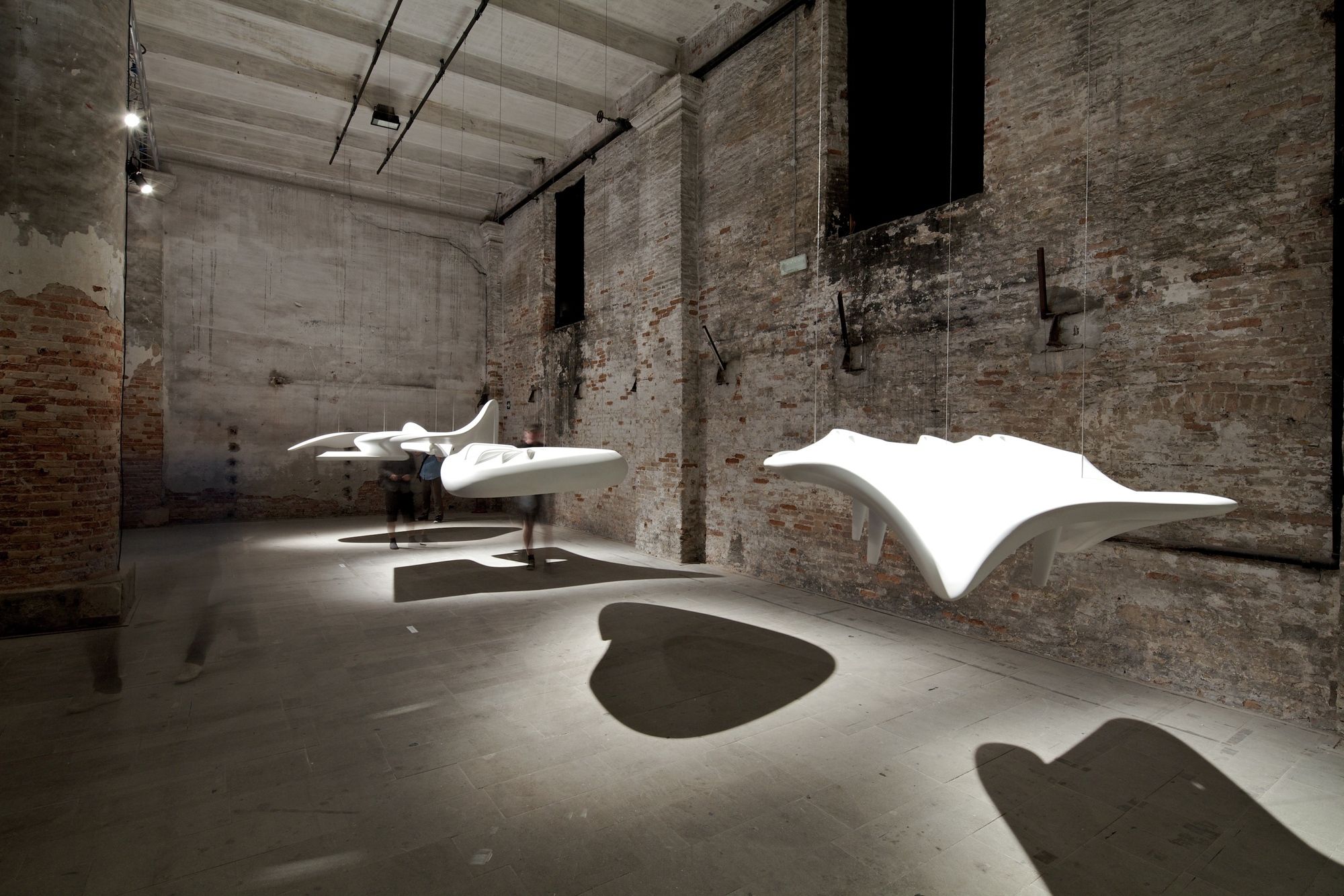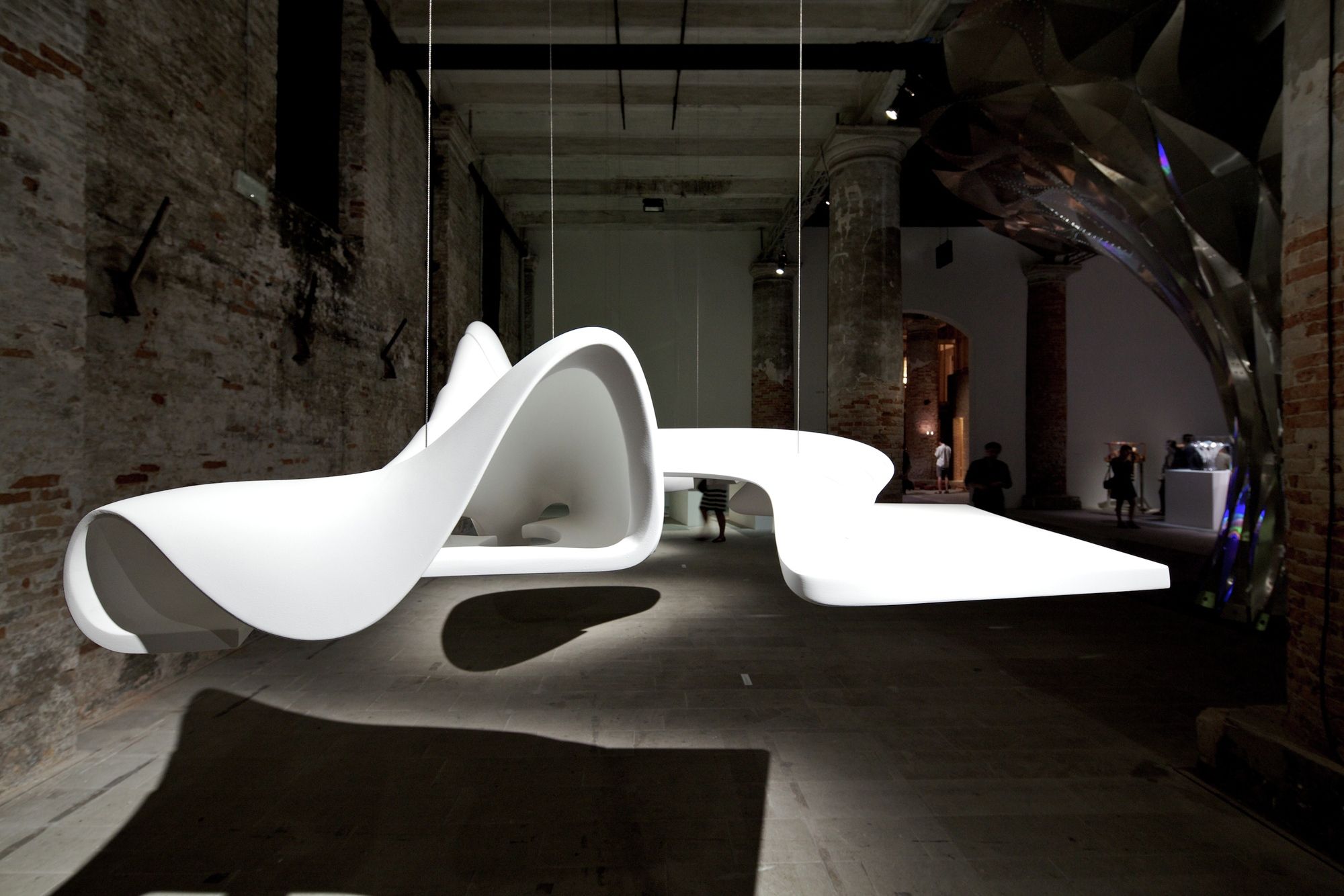Created from a pleated metal funnel and called “Arum”, a new masterpiece from Zaha that will be on show as part of the Common Ground exhibition in the Arsenale from 28 August to 25 November. The installation ‘Arum’ is derived from the work of German architect Frei Otto, the father of the material-structural form-finding processes. The installation will be on show as part of the Common Ground exhibition in the Arsenale from 28 August to 25 November.
Project Description from Zaha Hadid Architects:
This year’s Biennale theme ‘Common Ground’ shows how the work of the major protagonists of contemporary architecture – often regarded as independent individual creations – is in fact based on historical lineages of collective research. This is also true of the work of Zaha Hadid Architects. It is well known that the early work was initially inspired by Russian Suprematism.
In our installation and exhibition at the Biennale we want to show that – apart from the dialogue with the work of contemporary competitors that existed all along – our recent work connects to a rather different historical strand of research. The more our design research and work evolved on the basis of algorithmic form generation, the more we learned to appreciate the work of pioneers like Frei Otto who had achieved the most elegant designs on the basis of material-structural form-finding processes. From Frei Otto we learned how the richness, organic coherence and fluidity of the forms and spaces we desire could emerge rationally from an intricate balance of forces. We expanded Frei Otto’s method to include environmental as well as structural logics, and we moved from material to computational simulations.
One particular area of research we would like to explore with our installation is the domain of lightweight shells in combination with tensile structures. We have already designed a number of complex shells as well as some tensile structures. Here, for the first time, we would like to integrate these two worlds. The Arum shell is an installation made from pleated metal. We will surround the installation with the documentation of our research, including key reference projects of the pre-eminent precursors in this line of research.
We will show the work Frei Otto, Felix Candela, Heinz Isler among others and include work by Philippe Block, a young, contemporary researcher of stone compression shells.
Venice Architecture Biennale 2012 Room 1.9, Corderie dell’ Arsenale 29th August – 25th November 2012 With the support of Permasteelisa Spa and ARTE & Partners
Design: Zaha Hadid Architects with Patrik Schumacher
Exhibition Design: Woody Yao, Margarita Valova
Installation Design and Presentation: Shajay Bhooshan, Saman Saffarian, Suryansh Chandra, Mostafa El Sayed
Structural Engineering: Rasti Bartek, Buro Happold, UK
Material & Fabrication Technology: Gregory Epps, RoboFOLD
Coordinator: Manon Janssens
In collaboration with: Studio Hadid, Universität für angewandte Kunst, Vienna – Jens Mehlan, Johann Traupmann, Christian Kronaus, Mascha Veech, Robert Neumayr, Mario Gasser, Susanne John
The BLOCK Research Group, Institute of Technology in Architecture, ETH, Zurich – Philippe Block, Matthias Rippmann
Faculty of Architecture, ETH, Zurich – Toni Kotnik
Centro de Investigaciones y Estudios de Posgrado, Faculty of Architecture, UNAM, Mexico – Juan Ignacio del Cueto Ruiz-Funes
photography by © Nico Saieh
photography by © Nico Saieh
photography by © Nico Saieh
photography by © Nico Saieh
photography by © Nico Saieh
photography by © Nico Saieh
photography by © Nico Saieh
photography by © Nico Saieh
Courtesy of Zaha Hadid Architects with Patrik Schumacher
Courtesy of Zaha Hadid Architects with Patrik Schumacher
Courtesy of Zaha Hadid Architects with Patrik Schumacher
Courtesy of Zaha Hadid Architects with Patrik Schumacher
Courtesy of Zaha Hadid Architects with Patrik Schumacher
















